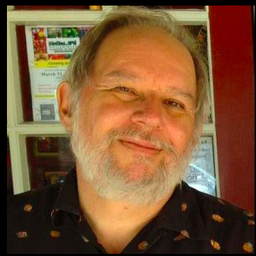
Joseph McClain
Science Writer and Editor at Freelance
Science writer. Former Director of Research Communication at William & Mary. Tweets are personal views of the moment.
Articles
-
Feb 13, 2025 |
eurekalert.org | Joseph McClain
NEWPORT NEWS, VA – Researchers have been working for decades to understand the architecture of the subatomic world. One of the knottier questions has been where the proton gets its intrinsic angular momentum, otherwise referred to as its spin. Nuclear physicists surmise that the proton’s spin most likely comes from its constituents: quarks bound together by gluons carrying the strong force. But the details of the quark and gluon contributions have remained elusive.
-
Feb 12, 2025 |
phys.org | Joseph McClain
Researchers have been working for decades to understand the architecture of the subatomic world. One of the knottier questions has been where the proton gets its intrinsic angular momentum, otherwise referred to as its spin.
-
Jan 7, 2025 |
scitechdaily.com | Joseph McClain
Physicists are diving deep into the subatomic world, using quantum chromodynamics and intensive supercomputer simulations to explore the dynamic inner workings of protons, potentially revolutionizing how we understand the building blocks of matter. Credit: SciTechDaily.comPhysicists turn to supercomputers to help build a 3D picture of the structures of protons and neutrons. A team of scientists has made exciting advances in mapping the internal components of hadrons.
-
Sep 18, 2024 |
innovations-report.com | Joseph McClain
Nuclear theorists in the HadStruc Collaboration have been working on a mathematical description of the interactions of partons using supercomputers, including machines in Jefferson Lab's Data Center. Credit: Jefferson Lab photo/Aileen Devlin Theorists turn to supercomputers to help build a 3D picture of the structures of protons and neutrons. Deep inside what we perceive as solid matter, the landscape is anything but stationary.
-
Sep 17, 2024 |
phys.org | Joseph McClain
Deep inside what we perceive as solid matter, the landscape is anything but stationary. The interior of the building blocks of the atom's nucleus—particles called hadrons that a high school student would recognize as protons and neutrons—are made up of a seething mixture of interacting quarks and gluons, known collectively as partons.
Try JournoFinder For Free
Search and contact over 1M+ journalist profiles, browse 100M+ articles, and unlock powerful PR tools.
Start Your 7-Day Free Trial →X (formerly Twitter)
- Followers
- 167
- Tweets
- 631
- DMs Open
- No

Background on that famous quote: https://t.co/B7VX4sfr3O

“You should, in science, believe logic and arguments, carefully drawn, and not authorities.” - Richard feynman

The news about the #RFKJrBrainWorm reminded me of this story I wrote more than 10 years ago. https://t.co/zEDTQgUo3o

Wonder about the origin of that "You should, in science..." quote? Read all about it: https://t.co/B7VX4seTeg

"You should, in science, believe logic and arguments, carefully drawn, and not authorities." Get “What Do You Care What Other People Think?” by Richard Feynman Free on Audible! UK: https://t.co/ZUBckjOwXH US: https://t.co/q6XEMDwa9Q

